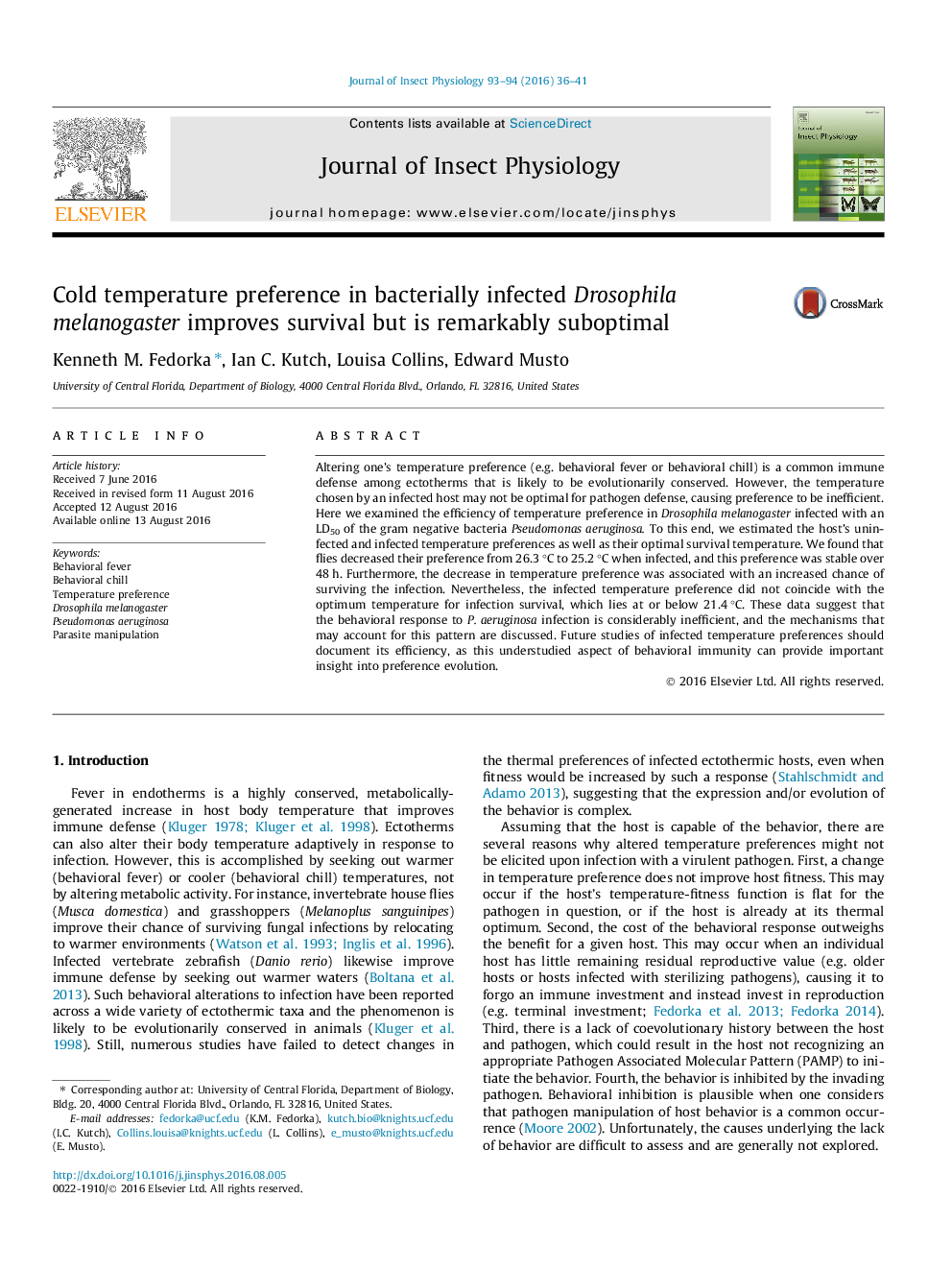| Article ID | Journal | Published Year | Pages | File Type |
|---|---|---|---|---|
| 2840255 | Journal of Insect Physiology | 2016 | 6 Pages |
•When infected, many insects improve survival by exhibiting behavioral fever.•Bacterially infected Drosophila melanogaster exhibit behavioral chill.•Behavioral chill improves survival but is not optimal for defense.•Suboptimal behavior can provide insights into temperature preference evolution.
Altering one’s temperature preference (e.g. behavioral fever or behavioral chill) is a common immune defense among ectotherms that is likely to be evolutionarily conserved. However, the temperature chosen by an infected host may not be optimal for pathogen defense, causing preference to be inefficient. Here we examined the efficiency of temperature preference in Drosophila melanogaster infected with an LD50 of the gram negative bacteria Pseudomonas aeruginosa. To this end, we estimated the host’s uninfected and infected temperature preferences as well as their optimal survival temperature. We found that flies decreased their preference from 26.3 °C to 25.2 °C when infected, and this preference was stable over 48 h. Furthermore, the decrease in temperature preference was associated with an increased chance of surviving the infection. Nevertheless, the infected temperature preference did not coincide with the optimum temperature for infection survival, which lies at or below 21.4 °C. These data suggest that the behavioral response to P. aeruginosa infection is considerably inefficient, and the mechanisms that may account for this pattern are discussed. Future studies of infected temperature preferences should document its efficiency, as this understudied aspect of behavioral immunity can provide important insight into preference evolution.
Graphical abstractFigure optionsDownload full-size imageDownload as PowerPoint slide
